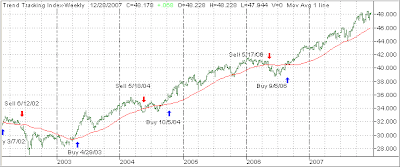 Minyanville had a hilarious piece in Kevin Depew’s “Five Things You Need to Know.” This one was number five and it dealt with General Mills’ move back in June to raise the price of its cereal while decreasing the box size so that customers would hopefully be fooled by the cost increase.
Minyanville had a hilarious piece in Kevin Depew’s “Five Things You Need to Know.” This one was number five and it dealt with General Mills’ move back in June to raise the price of its cereal while decreasing the box size so that customers would hopefully be fooled by the cost increase.
Some applauded the move, upgrading the stock from “Earnest” to “Sneaky,” while other Wall Street analysts found the whole thing confusing.
Minyanville obtained a transcript from a portion of that previous analyst call (not to be taken too seriously):
Analyst: So let me see if I understand this. The price of your cereal is going up?
General Mills Spokesperson: That’s correct.
Analyst: But the price per box is actually going down?
General Mills Spokesperson: Correct.
Analyst: So then how is the price going up?
General Mills Spokesperson: Because we’re making the box smaller.
Analyst: Ok, but you just said the price of each box is going to be less.
General Mills Spokesperson: Yes, that’s true.
Analyst: So then you’re actually lowering prices.
General Mills Spokesperson: No, we’re raising prices.
Analyst: How?
General Mills Spokesperson: Look, you’re an analyst, you work with numbers.
Analyst: Right. Ok. I got it.
General Mills Spokesperson: Next question.
Analyst: Uh, actually, I don’t get it. How can you raise the price by lowering the price?
General Mills Spokesperson: Because we’re decreasing the size of the box.
Analyst: Ok, but you’re charging less for each box.
General Mills Spokesperson: Yes. Because we’re decreasing the size.
Analyst: Ah, I get it. So then the price is really the same, you’re just making the box smaller which makes the price look lower.
General Mills Spokesperson: No, no, no! Listen. We’re raising the price of our cereal.
Analyst: But –
General Mills Spokesperson: Shut up! Now listen, we’re raising the price of our cereal.
Analyst: (Silence).
General Mills Spokesperson: Say it.
Analyst: We’re raising the price of our cereal.
General Mills Spokesperson: Good. We’re raising the price of our cereal… while simultaneously making the box smaller. Go on, say it.
Analyst: While simultaneously making the box smaller…
General Mills Spokesperson: But… and this is the important part… but we’re raising the price more than we’re decreasing the size of the box… go on…
Analyst: But we’re raising the price more than we’re decreasing the size of the box.
General Mills Spokesperson: So…
Analyst: So…
General Mills Spokesperson: That…
Analyst: That…
General Mills Spokesperson: Come on…
Analyst: Come –
General Mills Spokesperson: No, I mean, come on and follow the thought. So that…
Analyst: Oh. So that…
General Mills Spokesperson: The…
Analyst: The… price is lower?
General Mills Spokesperson: No! So that the customer…
Analyst: So that the customer…
General Mills Spokesperson: Will.
Analyst: Will.
General Mills Spokesperson: Oh good Lord. So that the customer will think the price has gone down when it’s really gone up!
Analyst: Oh.
General Mills Spokesperson: See? Price increase. Smaller box. Larger price increase than smaller box.
Analyst: Right. I still don’t get it.
General Mills Spokesperson: You know what? Just forget it.
Analyst: I’m going to have to downgrade your stock, you know.
General Mills Spokesperson: Good. Good. You do that.
Analyst: I will.
General Mills Spokesperson: I don’t even want you to rate our stock positive.
Analyst: Good, because I won’t.
General Mills Spokesperson: It would be an insult to the company for you to rate it positive.
Analyst: I’m downgrading your stock to “Mean.”
 Recently, a reader asked for clarification about the differences between Closed End Funds (CEFs) and Exchange Traded Funds (ETFs). The WSJ describes the features as follows:
Recently, a reader asked for clarification about the differences between Closed End Funds (CEFs) and Exchange Traded Funds (ETFs). The WSJ describes the features as follows:





